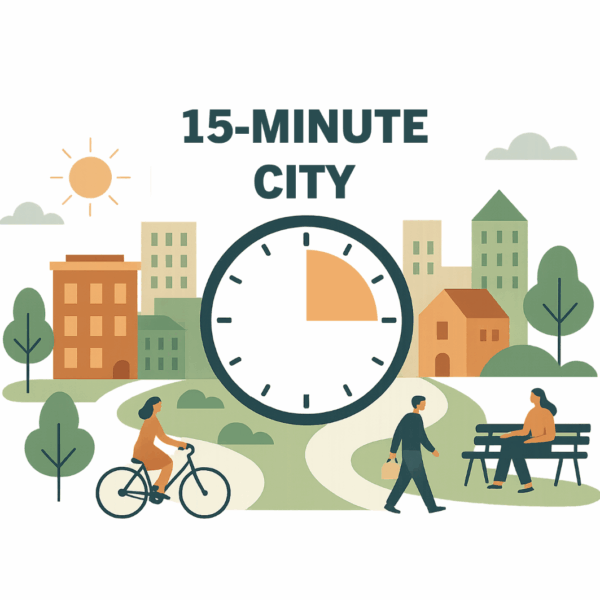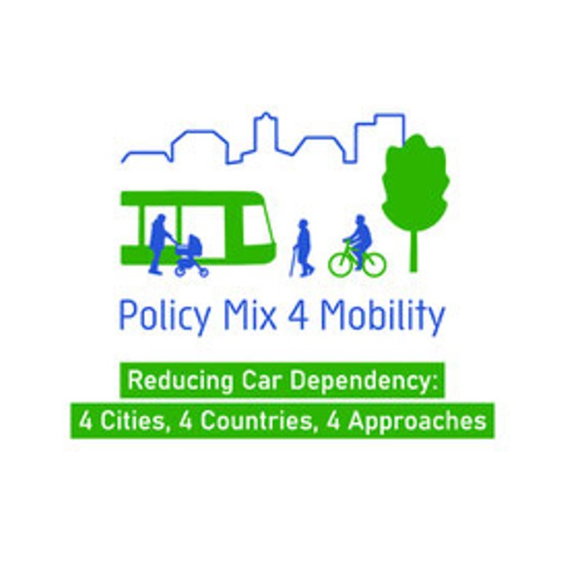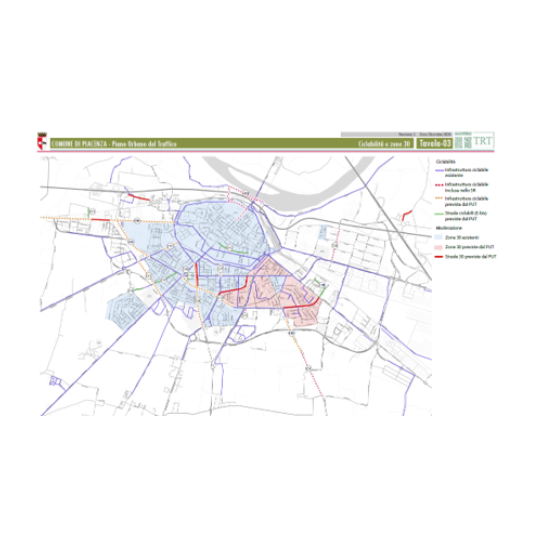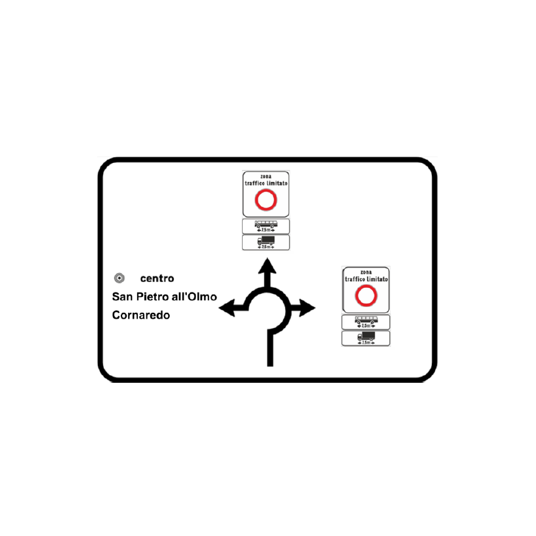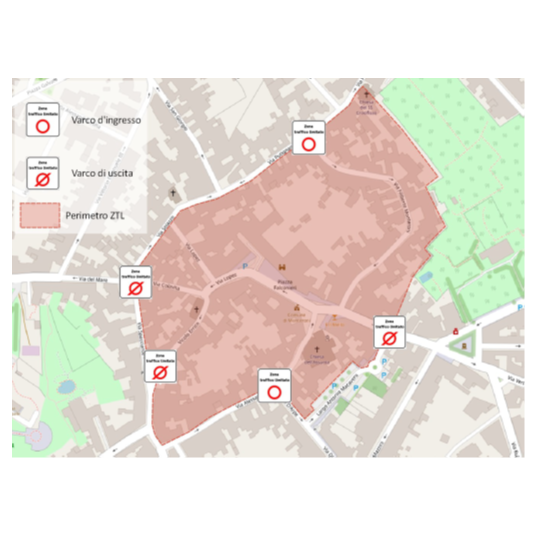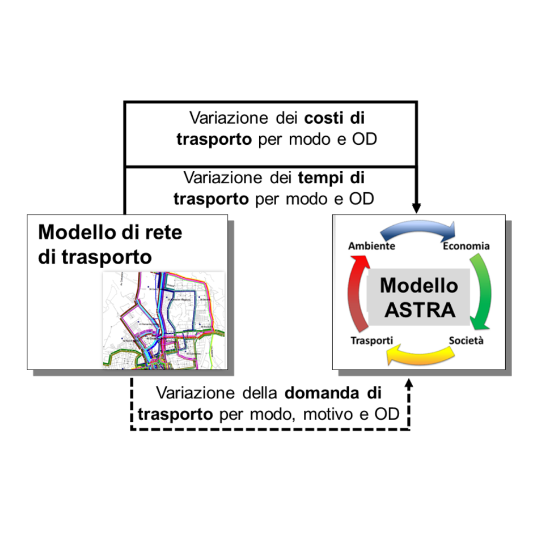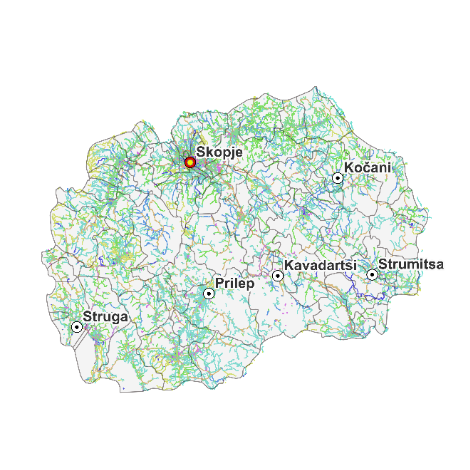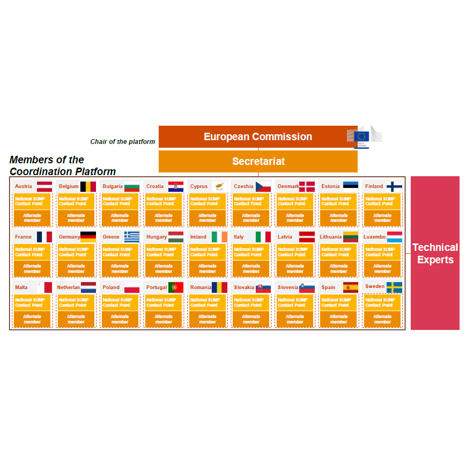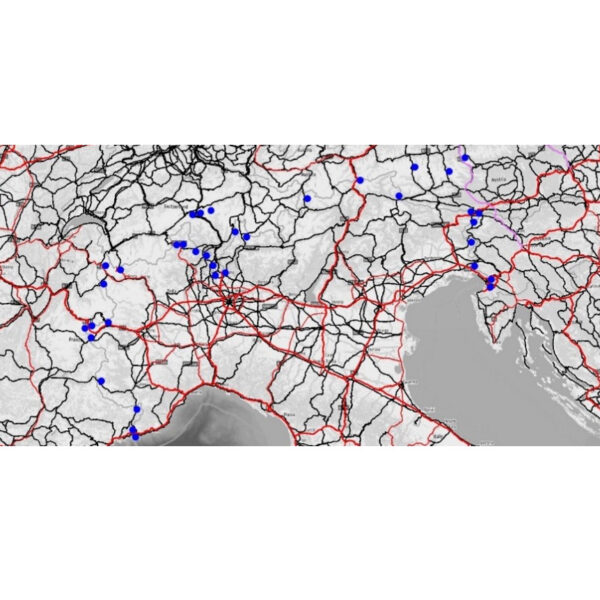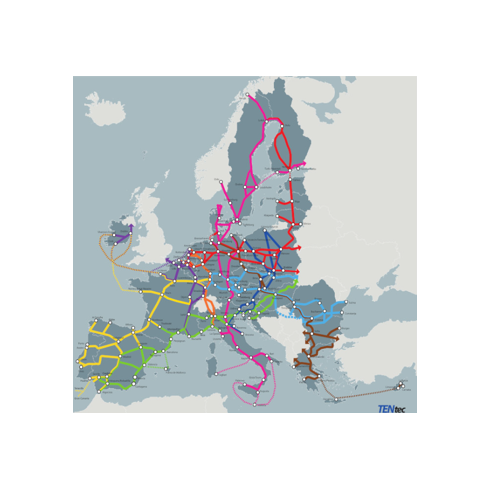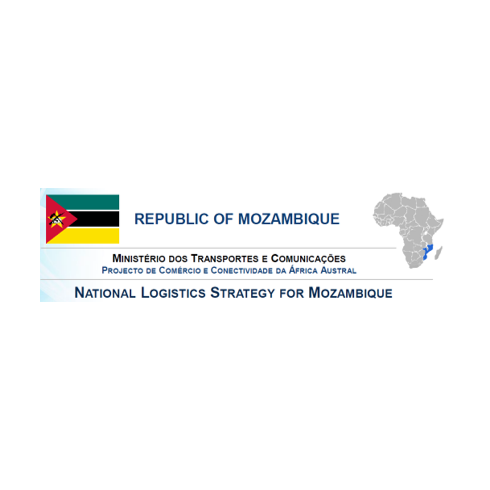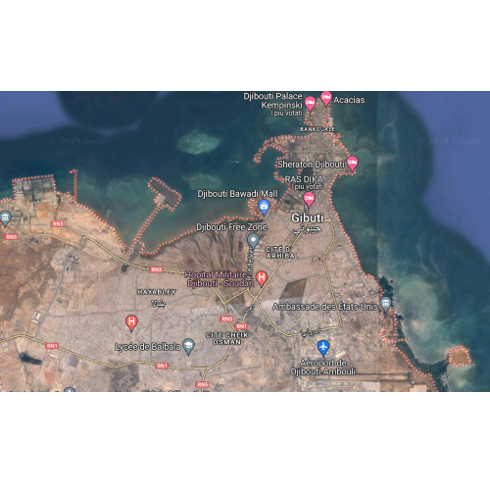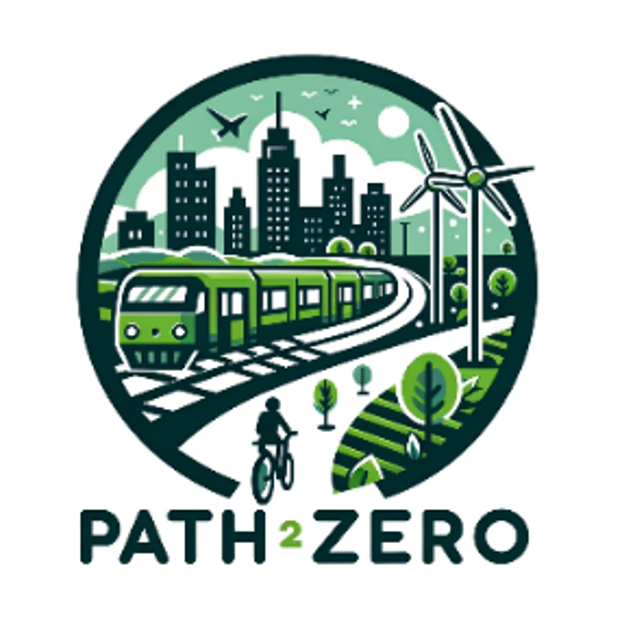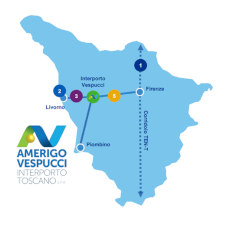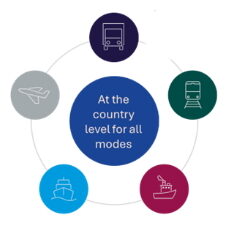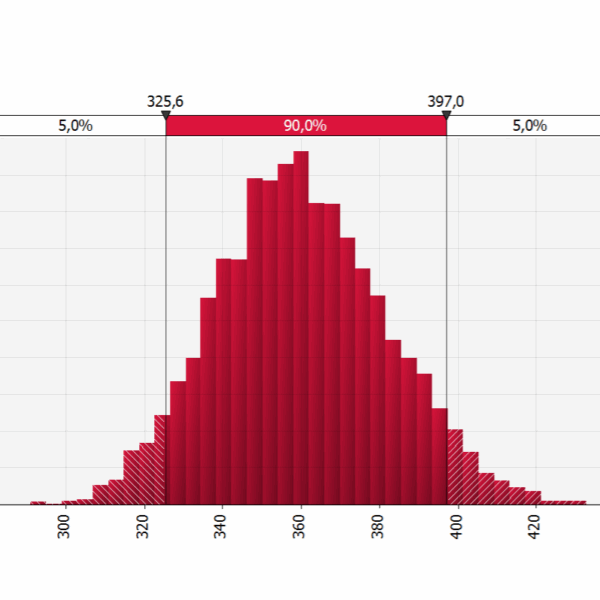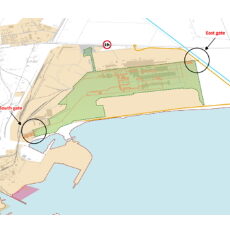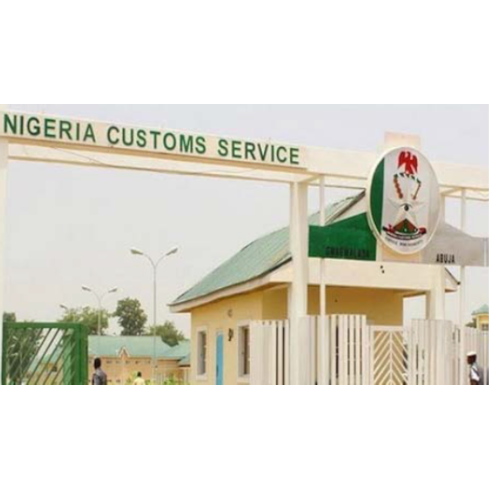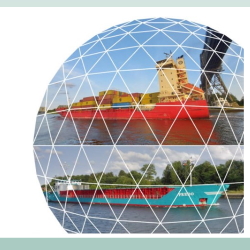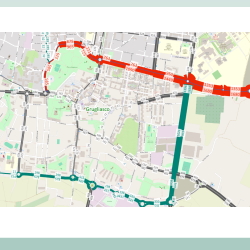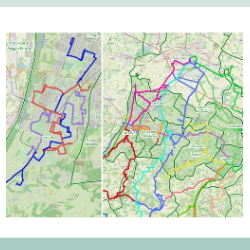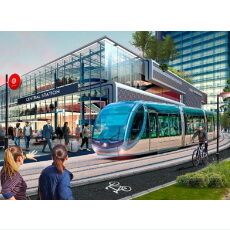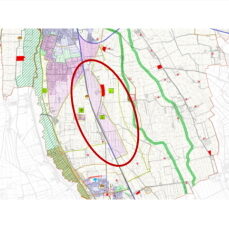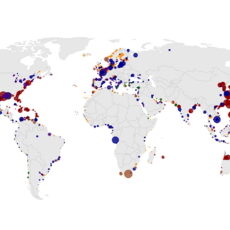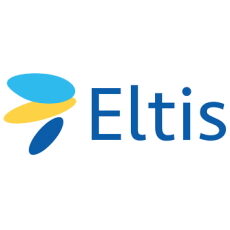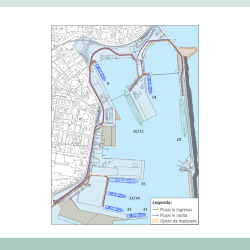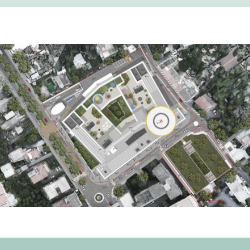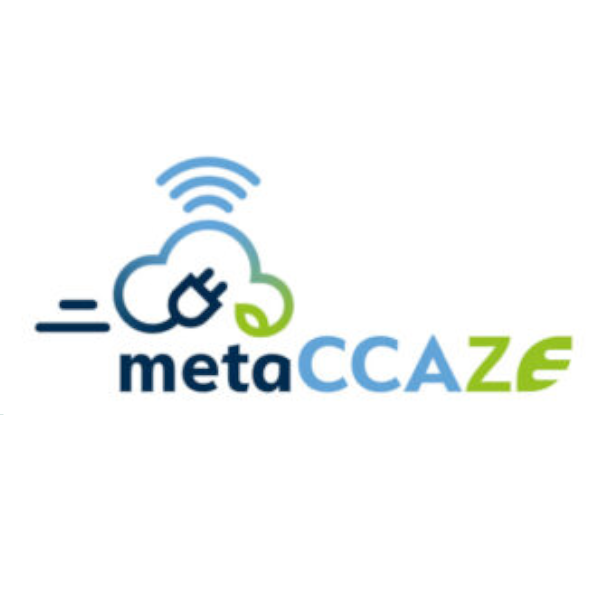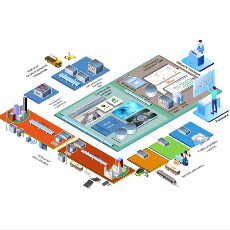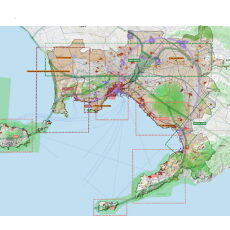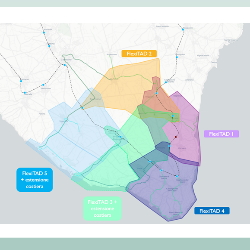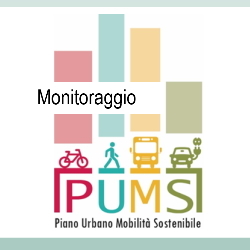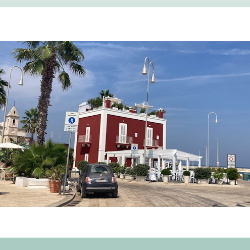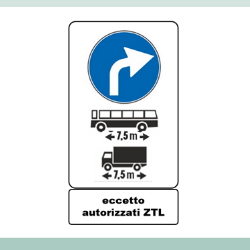- UVAR4US – Using Urban Vehicle Access Regulations for Reshaping Urban Space The UVAR4US project, coordinated by RiSE (Research Institutes of Sweden) with TRT among its partners, is funded under the Driving Urban Transitions (DUT) partnership within the Horizon Europe programme. The project explores how Urban Vehicle Access Regulations (UVARs) can help create cleaner, more liveable, and people-friendly cities in line with the 15-minute city vision — where daily needs are within a short walk or cycle. UVAR4US studies how access regulations affect mobility, the use of public space, and car dependency. By breaking UVARs down into key “building blocks”, the project identifies how different approaches can be combined to fit local urban contexts and community preferences. An open knowledge base will share examples of existing UVARs and their impact on mobility and urban life. A participation framework will highlight how citizen involvement and transparent decision-making contribute to successful policies. These resources will feed into the UVAR4US Toolkit — a practical set of tools to help cities design and evaluate UVAR strategies that support the 15-minute City model. Four Living Lab cities, each preparing to implement new access regulations, will test and refine the project’s tools and methods in real-life conditions. Why it matters Cities across Europe struggle with congestion, air pollution, and limited public space. UVAR4US aims to show how smarter vehicle access management can reduce car dependency, encourage walking, cycling, and public transport, and improve overall urban quality of life. Participating countries Belgium, Germany, Greece, Italy, Spain, Sweden. Funded project partners Cluster Viooikonomias Kai Perivallontos Dytikis Makedonias, Helsingborgs kommun, Living Prospects Ypiresies Anaptyxis & Perivallontos Etaireia Periorismenis Efthynis, Rupprecht Consult-forschung & Beratung GmbH, TRT Trasporti E Territorio Srl, Universiteit Gent
- Municipality of Fermo, Sustainable Urban Mobility Plan Following a tender procedure, the Municipality of Fermo entrusted TRT, together with local experts, with drafting the Sustainable Urban Mobility Plan (PUMS) and the related Preliminary Environmental Report – Screening procedure for Strategic Environmental Assessment (SEA).The drafting of the PUMS is structured in three phases. The first phase is related to the definition of guidelines, including the knowledge framework of the mobility system and the SWOT analysis, leading to the formulation of objectives and strategies. The planning-programming framework was defined at regional, provincial, and local levels, along with the territorial and socio-economic context of the planning area, the supply of transport networks and services, mobility demand, and the social (accidents) and environmental impacts generated by the mobility system. The second phase includes the drafting of the preliminary PUMS report, which builds on the knowledge framework to identify planning scenarios and related actions. This document allows the initiation of the SEA screening procedure, providing the essential information to assess the environmental impact of the Plan. In parallel with the first and during the second phase, a participation process was developed involving local stakeholders: initially to identify the critical issues of the mobility system and later to critically review the system of actions forming the Plan’s scenario. The feedback received helped refine the definition of scenarios based on comments and suggestions. The third phase is the drafting of the final Plan document, which includes not only the contents of the second phase but also the results of the MOMOS model application, as well as cost estimates and target indicators.
- Diffusing sustainable mobility options and reducing car dependency in urban areas PolicyMix4Mobility aims to create an inter- and transdisciplinary understanding of policy mixes and their effects based on policy packages that promote sustainable mobility practices and reduce car use in urban areas. This work is informed by a novel conceptual framework, bridging qualitative (case studies), quantitative (modelling) and transdisciplinary (urban labs, forum) methodological approaches to assess existing policy mixes and develop prospective ones. The project involves four European cities of different sizes and diverse socio-spatial conditions and policy contexts, located in Cyprus, Denmark, Germany, and Italy. While they differ in terms of progress towards sustainable mobility, but they share the common ambition to reduce car dependency and promote climate-neutral, socially just urban mobility systems. The project will first develop a conceptual basis for a better understanding of policy mixes aimed at reducing car dependency as well as a monitoring and evaluation framework for assessing the direct and indirect effects of such policy mixes. These will inform the empirical analyses performed through case studies in the four cities and the organization of urban labs. The case studies will enable the collection, analysis, and assessment of qualitative and quantitative data about policy mixes to reduce car dependency and their effects on mobility transitions. To improve the understanding of the effects of mobility and transport policy measures with a strategic approach, the project will also apply the MOMOS assessment tool. The Urban labs will develop in each city tools and methods for institutional, procedural, and social innovations, and actions plans for policy mixes to encourage their development and implementation. A key outcome of the project will be the Mobility Policy Mix Toolbox – a strategic resource designed to support cities and policymakers in navigating the complex politics of mobility transitions.The Consortium is led by IOEW (Germany), including TRT and 6 other partners from Cyprus, Denmark, Germany, Italy. TRT contributes to the project as it comes to: Introduction to the project by the coordinator Dr. Florian Kern (Institute for Ecological Economic Research – IÖW)
- Update of the Urban Traffic Plan (UTP) of the Municipality of Piacenza, a short-term (two-year) implementation tool of the Sustainable Urban Mobility Plan The Municipality of Piacenza has commissioned TRT to draft the monitoring report for the Sustainable Urban Mobility Plan (SUMP) (document submitted and registered on 10/08/2023) and to update the Urban Traffic Plan (UTP). The UTP is a short-term implementation plan (covering a two-year period) aimed at carrying out the interventions foreseen in the Short-Term Scenario of the SUMP. The development of Piacenza’s UTP follows the guidelines set out in the Ministerial Directives of 1995 and the most recent updates to the Italian Highway Code. The monitoring of the SUMP lays the foundation for selecting the interventions that define the scenarios of the UTP. In fact, the document reports on the updated state of urban mobility in Piacenza, assessing the progress and impacts of the actions taken since the approval of the SUMP in December 2020. Based on this evidence, the most consistent interventions with the SUMP’s short-term scenario (2–3 years) have been selected. This selection also considered existing planning tools, such as the 2024–2026 Three-Year Public Works Program, the Cycling Plan (approved on 17/04/2023), the Smart City Plan (October 2019), the Environmental Noise Action Plan, and other strategic documents. The UTP was developed in three main phases: With Municipal Resolution No. 23 of 11 February 2025, the Draft Plan was adopted. Following the 30-day period dedicated to public consultation, and the related replies/amendments, the Plan was definitely approved by the Municipal Council with Resolution No. 25 of 22/09/2025.
- Study to identify the perimeter of a Restricted Traffic Zone within the inhabited area of Cusago (Milan) TRT was commissioned to carry out a study aimed at identifying the correct perimeter of a Restricted Traffic Zone (ZTL) for commercial vehicle traffic to be placed within the inhabited area of Cusago, a municipality of the Metropolitan City of Milan. The implementation of the ZTL for heavy vehicles is intended to solve the problem of heavy vehicles crossing residential areas, where today a ban on access is in force, which is frequently not respected. The study included: Photographic overview of planned access points location
- Drafting of the Urban Plan of Sustainable Mobility of the Municipality of Monteroni di Lecce(LE) accompanied by verification of subjection to strategic environmental assessment (SEA) The Municipality of Monteroni di Lecce (LE) has entrusted TRT Trasporti e Territorio with the service of drafting the Sustainable Urban Mobility Plan (PUMS). The Plan is financed by the Apulia Region as part of the authority’s commitment to provide municipalities with strategic planning tools for the urban mobility and transport sector. TRT was chosen by the Administration in continuity with the recent work carried out for the elaboration of the General Urban Traffic Plan (PGTU), approved by the City Council in April 2024.Starting from the knowledge of the territory acquired thanks to the previous PGTU, TRT has drafted the PUMS, a Pano document of a strategic nature with a 10-year time horizon, which represents a medium-long term guide capable of orienting the Administration’s decisions in the field of mobility.The drafting of the PUMS developed through two phases. The first consisted in drafting the Plan’s Guidelines, containing the cognitive framework, the SWOT analysis and, consequently, the Plan’s objectives and strategies, including the description of indicators. The cognitive framework included the superordinate planning framework, the analysis of mobility demand, infrastructure and services endowment, the position of traffic attractors as well as information related to mobility impacts (pollutants, accidents, motorisation rate, etc.).The second phase included the identification of alternative Plan scenarios, monitoring, cost estimation, the results of the Plan Scenario assessment through the implementation of the strategic model MOMOS (MOdello per la MObilità Sostenibile) with the consequent extraction of transport, environmental, social and economic sustainability indicators. MOMOS was applied to assess, in an aggregate way, the impact of the mobility policies introduced, such as the expansion of the bicycle network, new public transport services, the ZTL, speed moderation, etc.. A screening report was also prepared to accompany the second phase, in order to evaluate the exclusion of the Plan from the SEA process by the competent authority. Monteroni SUMP was adopted with resolution n. 136 in the 8th on November 2024 by the Town Government Council and approved with resolution n. 6 in the 12th February 2025 by the Town Council.
- ASTRA-ЕС model update and improved interaction with multimodal network assignment tools ASTRA is an integrated strategic model employed for policy assessment in the transport and energy field. The model is based on the System Dynamics approach and built in Vensim; it simulates the interaction between the transportation system and the environmental and economy modules. It is developed by TRT and used for several years by the Joint Research Center of the European Commission. TRT supported the use of ASTRA by JRC in two studies: http://www.astra-model.eu/
- Technical Assistance for Development of Sustainable Urban Mobility Plans for five Municipalities and providing training on developing and implementation of Sustainable Urban Mobility Plans North Macedonia faces significant challenges in managing its extensive local road network, which spans approximately 9,000 kilometers and falls under the jurisdiction of decentralized municipalities. Many of these municipalities lack the capacity and resources necessary for effective infrastructure maintenance, resulting in deteriorating road conditions that limit access to essential services and opportunities, ultimately affecting citizens’ quality of life. Developing a well-structured Sustainable Urban Mobility Plan (SUMP) is crucial to addressing these challenges and achieving the aforementioned objectives. The primary objective of this project, financed by the International Bank for Reconstruction and Development – World Bank, is to develop the SUMPs for the municipalities of Kavadarci, Kochani, Struga, Strumica, and Prilep by enhancing accessibility, promoting health and safety, supporting economic growth, and mitigating environmental impacts. This will be achieved through the promotion of sustainable transport modes, and the adoption of low-carbon initiatives aimed at reducing emissions and optimizing traffic flow. The SUMP development process aligns with European guidelines and is divided into two macro-activities:
- Technical secretariat of the coordination platform to support Member States in implementing requirements for urban nodes in the revised TEN-T Regulation The European Commission’s Sustainable and Smart Mobility Strategy outlines a roadmap for achieving a sustainable, smart, and resilient transport system, with cities playing a central role in this transition. By 2030, all cities are expected to develop Sustainable Urban Mobility Plans (SUMPs) to drive this transformation. The New Urban Mobility Framework further emphasizes the importance of integrating cities and regions into the Trans-European Transport Network (TEN-T) by improving first and last-mile connections for both passengers and freight. Ensuring better coordination among local authorities is key to achieving this goal. To support these efforts, the revised TEN-T Regulation designates 432 urban nodes and establishes key requirements to be met by 31 December 2027. These include: To facilitate the implementation of these requirements, a coordination platform is being established. This platform serves as the main forum for exchange and collaboration among EU Member States, supporting the rollout of SUMPs and urban mobility indicators (UMI). By fostering knowledge-sharing and cross-border cooperation, it aims to ensure a consistent and high-quality approach to urban mobility across Europe. The platform’s technical secretariat is coordinated by PwC, with TIS, TRT, and ICLEI integrating the consortium. TRT leads Task 2, a pivotal component of the project that focuses on providing expert advice for implementing the urban node requirements. Key responsibilities include:
- Application of the TRUST model to support the resilience analysis of the Alpine crossing system The aim of the study was to analyse the resilience of the Alpine crossing system, that is, to evaluate how much the complex of crossings can guarantee an adequate level of service in case of “breakdown” events. For this purpose, the TRUST model, which is a strategic model at European scale, was used to simulate the functioning of the entire range of crossings with respect to the different hypothesized scenarios. The definition of the scenarios considered the fact that, from the point of view of their modelling, it is not the nature of the event that generates a certain variation of the inputs that is significant, but the extent of the variation that is determined in the functioning of the transport system. The scenarios have been translated into variations of one or more input elements of the model itself, namely: availability of some arcs to the modelled vehicle categories, capacity of the road links, travel speed on the links for the modelled vehicle categories. The application of the TRUST model produced, for each scenario, the following results compared to the reference situation:
- Identifying the untapped potential of completing key aspects of the Single European Transport Area (SETA) and of extending it to candidate countries Transport is a central pillar of European integration and a key pre-condition for the European Single Market. Access to seamless and efficient transport services and infrastructure across Europe is key to the functioning of the EU common market, affecting the free movement of people, goods, and services. The objective of the study is to provide a systematic analysis of the existing regulatory and non-regulatory barriers – as well as missing elements – that hamper the creation of the SETA and the completion of the Internal Market for the transport of goods and passengers and understand the economic impact of such barriers and missing elements. The study will use carefully selected case studies, to illustrate, with a combination of quantitative and qualitative analysis: TRT is the project coordinator of a 4-partner (Ricardo, M-FIVE, and TEPR) consortium, responsible for all activities of the studies, and main contact with DG MOVE
- Exploratory study for the new proposal addressing market challenges for the development of Multimodal Digital Mobility Services and the Single Digital Booking And Ticketing Regulation The main objective of the study is to support the development of the European Commission’s proposals for two parallel and complementary regulations: The focus of the study is on medium-long distance passenger trips, above 50 km. The activities will include at first the market analysis on the two aspects covered by the study. On the MDMS demand side, existing and potential demand for the use of MDMS services will be explored, while on the supply side, the presence, practical availability and accessibility of options across the EU will be assessed through the analysis of 100 representative routes. Passenger transport services and online passenger ticketing will be analysed for different modes of transport: air passenger transport (including Norway), rail passenger transport, bus and coach transport and maritime transport. Based on the analysis, the study will also define different policy options and support the assessment of the related impacts through the application of a modelling framework consisting of 6 modules, including the strategic ASTRA model. Impacts on passenger choice and resulting modal shifts will be estimated together with the resulting environmental, economic and social indicators by Member State and in 5 year steps up to 2050. The Consortium is lead by RICARDO, including TRT, TIS and TEPR. TRT contributes to the project as it comes to:
- The National Logistics Strategy for Mozambique was committed to a consortium coordinated by IdeaConsult and involving TRT and EEPLAN (a company located in Mozambique). The main objectives of the assignment are: The assignment will be carried out in four stages according to the following:
- The Djibouti authorities have appointed the consortium led by IDEA Consult to develop a long-term vision for urban mobility and an action plan for the short, medium and long term, taking into account climate change and its impact on transport networks. The aim of the project is to address the problems of the capital’s transport system, which are undermining its functionality. The study will be carried out in three phases An initial diagnostic phase of the urban transport system, which includes analysing demand, surveying the current state of the road infrastructure and constructing a macro and micro model. A second phase consisting of two main activities: a short-term priority investment programme providing rapid responses to problems, and the development of a shared long-term strategic vision for the urban transport system. Finally, a third phase will be the definition of the master plan for the urban road system. Within the consortium TRT will be responsible for:
- Accelerating net-zero transformation by advancing Europe’s transport pathways and cross-sectoral synergies, with the assessment through a system dynamic modelling framework of current plans and the design of alternative pathways PATH2ZERO aims to provide a comprehensive knowledge base for developing, evaluating and benchmarking net-zero transport pathways, including cross-sectoral assessments and fostering global collaboration. The transport sector accounts for a third of total greenhouse gas (GHG) emissions in the EU, and current planned policies (at EU and national level) alone are expected not be sufficient to meet these targets. Accordingly, there is a need to “develop a new post-2030 energy and climate policy framework to implement the 2040 GHG ambition level” as well as to achieve net-zero GHG emissions by 2050. The project will first develop a common analytical framework for the description of national pathways, with a focus on transport-related content, to collect comparable descriptions of implemented and planned cross-sectoral mitigation plans and transport policy pathways, as well as data for each EU Member State. An interactive dashboard will provide an overview of the current policy frameworks in the EU Member States related to the decarbonisation of the transport sector, facilitating comparative analysis. An advanced modelling framework (STraDyM – Transport Strategies Dynamic Model) will be designed and developed to forecast transport sector activity and emissions up to 2050 at Member State level, integrating them with other sectors for in-depth GHG mitigation assessments, including equity and economic impacts. Existing national transport models (available in five countries) will complement the framework. Finally, the PET-VTT model will be used to model the national and EU level pathways and strategies, including all the energy sectors and mitigation of CO2 emissions (taking transport-related input from the StraDyM and national models). The modelling framework will allow to assess whether the pathways currently implemented and planned in national strategies are likely to achieve the target reduction on the national level, what impact these strategies bear in terms of fairness, costs and risks. Finally, alternative pathways will be designed and simulated, highlighting all target and pathway choices and their trade-offs to evaluate and assess their impacts and effectiveness. The Consortium is led by DLR (Germany), including TRT and 10 other partners from Finland, Spain, Greece, Hungary, Germany, UK, Norway, France, Italy. TRT contributes to the project as it comes to:
- Drafting of the new Sustainable Urban Mobility Plan and updating of the General Urban Traffic Plan for the city of Udine After a tender process, TRTIngegneria, in partnership with ISFORT Istituto Superiore di Formazione e Ricerca per i Trasporti, Ambiente Italia and GVG Engineering, was selected by the Municipality of Udine to draft the city’s first Sustainable Urban Mobility Plan (SUMP) and update its General Urban Traffic Plan (PGTU). With regard to the PUMS, the working group’s activities are structured according to the following methodological steps, in line with the 2019 guidelines of the Ministry of Transport and the new Regulation (EU) 2024/1679 (the city of Udine is a TEN-T urban node): All phases are accompanied by a broad and structured communication and participation campaign, which involves citizens and stakeholders through public meetings, technical round tables, focus groups and online questionnaires. The PGTU is developed on the basis of the objectives and measures defined in the short-term scenario of the PUMS, detailing the characteristics and feasibility of the individual actions. During the drafting of the PGTU, a series of urban traffic nodes are subject to detailed assessment through the application of a micro-dynamic simulation model (VISSIM) integrated with the multimodal model developed for the PUMS.
- Port of Livorno and Interporto Vespucci – Development and interaction between the Rail Plan and Darsena Europa The study, developed on behalf of Vega Engineering for the AdSP of the Northern Tyrrhenian Sea, was aimed at the functional analysis of the port – freight village system in the Livorno area to assess its potential and opportunities following the realisation and full implementation of the Piano del Ferro and the Darsena Europa. To this end, a cognitive framework was defined on the characteristics of supply and demand, current and future, of the port-freight village system and the definition of the functional evolution of the system in relation to the realisation of the planned infrastructural interventions around it. To support the definition of the port and freight village system, an analysis of the main Italian freight villages was also carried out in order to identify their characteristics, good practices and strong points to be transferred, if necessary, to the specific context of Livorno. Following the definition of the evolutionary scenarios, the infrastructural potential of the intermodal terminal was verified, and the future prospects of the entire port-freight village system were assessed, integrating this activity with the support of a simplified economic-financial analysis for the various evolutionary scenarios.
- Support for studies and research on demand and supply of taxi services in the Lombardy airports area The study consists of an analysis of the demand and supply of taxi services in the Lombardy Airport Basin. The overall objective of the study is to contribute to the definition of the appropriate level of taxi service in the Basin and the consequent determination of the number of licences required to provide this service. The study consists of several activities.The first activity is a sector study aimed at reconstructing elements regarding the supply context (mainly the regulatory framework) and potential demand for mobility in relation to taxi services. The second, and main, activity is a sample survey of Stated Preference to analyse the importance of several variables inherent to the taxi service and competition with alternative modes. The survey is conducted by means of a web-based questionnaire (CAWI) on a sample of 850 residents in Lombardy and 250 residents in other regions. For each respondent, the questionnaire includes some introductory questions and two different Stated Preferences exercises. The third activity is a fieldwork analysis of the interaction between demand and supply of services at a sample of taxi parking areas. The purpose of the survey, repeated annually for the three years of the study, is to analyse the main dynamics related to car parking times, customer waiting times, average number of customers per ride and other elements. The fourth activity consists of setting up a monitoring system for the taxi service. This includes the definition of a list of indicators and procedures for their quantification (data collection and processing) TRT develops all the activities of the study, except for the operational execution of the surveys, which is taken care of by companies identified directly by Polis. However, TRT takes care of the definition of the survey instruments (questionnaire) and the sample.
- Assess the degree of the implementation of the ‘user pays’ and the ‘polluter pays’ principles in the transport field in the EU Member States and other developed countries The objective of the study is to assess the extent to which the “user pays” and the “polluter pays” principles are implemented in the transport field. This allows the European Commission to observe the progress of Member States towards the goal of full internalisation of external and infrastructure costs of transport and to identify options for further internalisation. This study is an update of previous studies published in the years 2019 and 2014. The scope of the current study is extended to cover all external costs, all transport modes and, geographically, EU27 plus UK, Norway, Switzerland, Turkey, Western Balkans, Iceland, USA (2 States), Canada (2 provinces), Japan, Australia, New Zealand. Specific objectives concern: Provide estimations of total, average and marginal infrastructure and external costs for all relevant modes/vehicle categories and countries. Provide a detailed and transparent overview of the transport-related taxes and charges, including their structure and revenues, for all relevant modes/vehicle categories and countries. Assess the application for the different transport modes in the relevant countries of both the user-pays and polluter-pays principles. The update of the Handbook on External costs The objectives of the study are achieved through a comprehensive data collection on infrastructure costs (i.e., investment, renewal and operating), transport charges, earmarking of tax revenues and user charges. Appropriate methodologies are applied to estimate external costs for all modes and categories. With regard to the activities of the study, TRT (already involved in previous studies) is responsible for: developing estimates of the external costs related to congestion for all transport modes, developing estimates of infrastructure costs for rail mode and with regard to all categories of external costs elaborating the analysis of six case studies on intermodal freight terminals, and supporting data collection, as country expert for Italy, France, Poland, Latvia and Lithuania. For more information, check our previous study on Sustainable Transport Infrastructure Charging and Internalisation of Transport Externalities
- Feasibility project of the mass transport system for the connection between the area of the railway station located in Latina Scalo and the city centre TRTingegneria as member of the consortium formed by Tecnosistem (leader) and One Works (partner), has been commissioned to draft the Technical and Economic Feasibility Project – PFTE – for the public transport connection between the railway station (located in Latina Scalo) and the city center of Latina. Within the project, TRTIngegneria is responsible for the preparation of the cost-benefit analysis and risk analyses. The Cost-Benefit Analysis evaluates, by comparison, different alternatives of the public transport lines’ routes through the calculation of their main economic indicators (Economic Net Present Value – ENPV and Economic Internal Rate of Return – EIRR). The basic approach of every evaluation is the comparison of different alternative scenarios against the reference scenario of no project implementation. The analysis is conducted considering the MIT Guidelines for the evaluation of investments in public works (2017) and the recent Addendums for the submission of applications for access to resources designated for Rapid Mass Transport by Fixed Installations and for the evaluation of railway projects (2021). As required by the ministerial guidelines, the economic analysis is accompanied by the qualitative risk analysis and the quantitative risk analysis, that has been developed using the specialized software (@Risk). The @Risk software employs Monte Carlo simulation, a statistical technique that involves running multiple simulations using random variables to generate possible outcomes for a decision or event. The quantitative risk analysis is enhanced with sensitivity analysis, scenario analysis, and their optimization. For the main statistical variables (e.g., investment costs, operational costs, benefits, etc.), the software allows choosing from numerous distribution curves and generates numerical and graphic outputs with the calculation of P90 and/or P80 and P50 probabilities for the results of the analyses conducted.
- Analysis of the external logistics of the new metallurgical complex in Piombino The analysis, developed on behalf of Metinvest Adria S.P.A., aimed to assess the impact of the external logistics of the new Piombino steel complex. The logistics operations concern the handling of bulk materials and finished steel products (coils and steel plate packaging) from the production site to the external network and vice versa. These handling operations will involve the railway line from the new complex to the Fiorentina station in Piombino, the junction of the existing railway network, the road network serving the area under study and the port area for relations by sea. The analysis was carried out considering two different delivery options of raw material to the industrial site: Option 1 (Basic), according to which the largest share of the volumes are delivered to the new complex by truck and train; Option 2 (Alternative), according to which 80 per cent of the total quantity is delivered to the site by ship. Furthermore, in the analysis of external transport by rail from the plant to the Fiorentina railway station in Piombino, two different study options were considered, which differ substantially in terms of the route taken to the external network. The current demand for both modes of transport considered was then reconstructed, the demand induced by the production site was estimated, and the infrastructures capacity was verified. As far as logistics between the port and the new complex are concerned, the number of vehicles that can be handled during daily operating hours was identified together with a check on rail capacity for an optimal evaluation of solutions. To supplement the analysis, the study included the dimensioning of checkpoints for vehicle control, loading, weighing and document operations, as well as an estimate of the number of locomotives required to manoeuvre the estimated trains.
- Trade and Transport Facilitation Study on the Abidjan-Lagos Corridor Highway Development Project The core of the study, committed to TRT and IdeaConsult, is the analysis of the current process of border crossing by both passengers and freight within Cote d’Ivoire, Ghana, Togo, Benin and Nigeria. This analysis aims to identify any bottlenecks, whether they are legal, regulatory, or related to physical infrastructure, that complicate the crossing. The study then will propose measures at both national and regional levels that would significantly improve the current crossing systems in terms of both time and cost for passengers and goods crossing one or more borders along the corridor. TRT team will provide its expertise for tasks related to ICT, logistics, and transportation, through the involvement of selected key experts. The work includes organising on-site meetings, collecting data for the reconstruction of the state of the art in the fields of ICT, logistics, and transportation in the corridor and in the countries concerned. TRT team is responsible for drafting reports on ICT, logistics, and transportation themes and for presenting the results and content of the reports.
- Study on short-sea shipping’s contribution to the European transport network and the means to support and revitalise the sector A consortium led by Ecorys and consisting of TRT and CERTH-HIT has been appointed by the EC DG MOVE to conduct a study on short-sea shipping’s (SSS) contribution to the European transport network and the means to support and revitalise the sector. The SSS is seen as one of the transport modes that can contribute to achieving the goals as laid down in the European Green Deal, such as cut EU’s GHG emissions by at least 55% in 2030 and to become climate neutral in 2050. The study aims at assessing the contribution of SSS to the EU’s transport network and identifying the potential and challenges affecting its growth in the EU. Three main objectives are defined to achieve the aforementioned aim: to analyse the state of play of EU shipping and SSS, assessing the current role that SSS plays in the European transport network; to provide an analysis of the projected evolution of SSS in the EU at a regional, national and local level, and to analyse the main factors affecting the development and evolution of SSS in the EU; to develop and propose, in conjunction with the relevant stakeholders, policy recommendations and directions based on the results of the analysis carried out, identifying the means to support and revitalise the sector. The objectives will be achieved through sequential performing of four main tasks: desk research (task A), stakeholder consultations (task B), policy recommendations (task C) and dissemination (task D). Tasks A and B represent backward- and forward-looking exercises respectively aimed at understanding the historical development of the SSS sector and its evolution in the future. Concrete policy recommendations will be created through case study analysis and roundtable. These 3 tasks are developed in a way to address 33 information needs according to the terms of reference. The study will finish with dissemination exercise. The study activities will be performed analysing the sector from different dimensions: 1. Market, 2. Multi-modality, 3. Business, 4. Fleet, 5. Policy, funding and financing and 6. Neighbouring and third countries. TRT will lead the desk research phase and is responsible for dimensions 1. Market and 6. Neighbouring and third countries.
- Traffic models to support mobility analysis and the Grugliasco General Urban Traffic Plan Zona Ovest di Torino is a company whose goal is to carry out activities aimed at the social and economic development of the western area of Turin, through the realisation of services, projects and public financing initiatives with a wide area approach. Entrusted with the task of drafting the General Urban Traffic Plan of Grugliasco, Zona Ovest di Torino has chosen TRT for the development of the modelling tool necessary for the evaluation of the urban transformations underway and the Plan scenarios. The model will be developed in an open source environment using the SUMO software, exploiting its ductility and broad calculation capacity by extending the coverage of the study area to all the city’s road axes. This approach is innovative both from the point of view of the software used and the scale of the model with microscopic characteristics, usually applied to smaller areas. The model thus configured will be used to evaluate the different plan scenarios that will be envisaged by the General Urban Traffic Plan, in order to compare them and allow an overall assessment of the impact of the simulated measures.In preparation for the micro-simulation model, a second macro-scale model has been developed, on a municipal scale, covering the city’s main road axes.
- Technical assistance to assess the potential demand for a public transport system in the ceramic district area and connections to Modena The Transport Infrastructure and Sustainable Mobility Sector – General Directorate for Territorial and Environmental Management of the Emilia-Romagna Region entrusted TRT Ingegneria with the “Technical assistance aimed at assessing the potential demand for a public transport system in the area of the ceramic district and connections with Modena”. The purpose of the study was to carry out an analysis of possible alternatives for the local public transport system along the corridor between Sassuolo and Vignola. In the first instance the study analysed the main characteristics of the area considering: current rail and road public transport offer, both in terms of routes and active services; travel demand based on available sources, both local and regional. In particular, reference was made to the Origin-Destination (OD) matrices estimated by PRIT2025, the PUMS of Modena and the Distretto Ceramico, as well as data on the demand transported by LPT services in the area; various sector planning documents currently in force, in order to better understand what is envisaged in the corridor under study. Starting from this knowledge base, the study identified five different alternatives for new public transport services between Sassuolo and Vignola for a subsequent preliminary assessment. The preliminary assessment cross-referenced demand data with supply data referring to the different systems (capacity, performance, costs, investment and management, etc.) and was complemented by a multi-criteria analysis that followed three main steps: definition of evaluation criteria and sub-criteria; estimation of the criteria weights through the involvement of local administrators and stakeholders by means of interviews; normalisation of the measurements to ensure comparability.
- Update of the study on the “Costs and Benefits of the Urban Mobility Transition” The Costs and Benefits of the sustainable urban mobility transition study was carried in 2021 by TRT with the purpose of assessing the impacts of different sustainable urban mobility scenarios in European cities while quantifying the costs and benefits of this transition in 2030 and 2050. The current study consists in an update and improvement of the previous analysis, aiming to: Refine the input data, the intervention levels and targets of the policy measures of the transition scenarios and their timeline of implementation. Improve and enlarge the policy measures applied to the scenarios Run a new modelling simulation to quantify the expected costs and benefits of the sustainable urban mobility transition in European cities by 2030 and by 2050. Draft specific policy recommendations for practitioners. Provide a set of relevant datasets for the development of an interactive tool The calculation is based on an improvement and extension of the MOMOS model, which allows to assess the impacts of different mobility transition scenarios. The quantification of results is applied to 12 city prototypes (representing more than 780 cities in EU27), considering different dimensions (small, medium, and large cities) and geographic areas (southern, central/western, northern, and eastern Europe). The project will consider three potential scenarios, based on a combination of policy measures taken from key EU initiatives and related to the specific emphasis of each scenario. The available measures are of a different nature and comprehensively cover the range of options that cities currently have available to promote the transition to sustainable urban mobility, belonging to eight different policy groups: Shared Mobility; Innovative mobility services; Vehicle fleet & Charging Infrastructure; Transport Infrastructure; Transport avoidance and behaviour; Pricing Schemes; Traffic management and control; urban logistics. The outputs of the study will consist in a series of indicators from three domains, estimated at base year 2022 as well as at future years 2030 and 2050: transport (modal split, car ownership), environment (CO2 and air pollutant emissions, fatalities), and economic (city costs, revenues, user and freight operator costs, and externalities). Also, building on the results for the 12 city prototypes and on a policy effectiveness comparison of the different groups of policy measures, a series of recommendations focused on mobility practitioners will be provided. For more information: Previous contract
- Pre-feasibility study for the establishment of a Vertiport in the Municipality of Piacenza The pre-feasibility study for the establishment of a vertiport in Piacenza is pioneering in the context of Urban Air Mobility themes and has been structured around three main lines of activity: market analysis, demand analysis (potential), and location hypotheses. The market analysis and its prospects involved an in-depth examination of electric vertical takeoff and landing (eVTOL) aircraft, their temporal outlook, and the technological barriers associated with such technologies. An overview of the global and national market was provided, and insights were developed regarding the ground infrastructure enabling these new services – Vertiports – as well as potential services, taking into account industry regulations. Furthermore, a detailed analysis was conducted on both global and Italian cases of experimental vertiport implementations, examining the regulatory framework in the sector. The analysis of potential demand was conducted using big data, derived from mobile network cells, and focused on exchange flows with possible attractor centres within a radius of approximately 150 km from Piacenza. These attractor centres included the city of Milan and the airports of Milan (Maplensa and Linate), Bergamo, Bologna and Turin. The potential locations for the vertiport within the territory of the Municipality of Piacenza were examined, taking into account the necessary infrastructure elements and European guidelines provided by EASA (European Union Aviation Safety Agency). The selection criteria favoured pre-existing, accessible areas. Finally, the estimate of the minimum required square footage and associated costs have been prepared.
- Urban reorganization and landscape requalification sheet – Logistic hub in Isola della Scala The Municipality of Isola della Scala, affected by the provisions of the «Quadrante Europa Area Plan» (PAQE), which include – among others – the development of a logistics hub on its territory, has entrusted TRT Ingegneria with the service of drafting a Masterplan called «Urban reorganization and landscape requalification sheet». The focal point of the logistics hub is the provision for an intermodal centre, an infrastructure specialized in rail-to-rail and rail-to-road exchange functions located along the Verona-Bologna railway line (on the Brenner route and part of the TEN-T «Scandinavian-Mediterranean» corridor). Methodologically, the drafting process of the Masterplan is structured into the following macro-actions:
- Study on cross-border investment needs and climate adaptation of the TEN-T network The effective implementation of the TEN-T policy, with the completion of the core network and the extended network by 2030 and 2040, is key to creating a competitive industry, expanding the labour market, promoting growth and jobs and improve the daily lives of European citizens. It is therefore important to ensure sufficient investment for the completion of the TEN-T network. While it is important to complete the TEN-T, it is equally important to ensure that the infrastructure resists the threats of extreme events resulting from climate change, which will continue to increase in frequency, intensity, duration and spatial extent in the coming decades. The objectives of this study are: 1) identify the investments necessary to make the TEN-T resilient to climate change, 2) identify the investments necessary to remove the cross-border bottlenecks of the TEN-T and ensure its completion. In the study conducted together with M-FIVE (DE), VUB (BE) and ISL (DE), TRT is responsible for: Analyse and quantify the investments necessary for the completion of the TEN-T network until 2040, with particular focus on 43 cross-border projects and 33 national projects. Carry out an assessment of the economic and transport impacts resulting from the non-completion of cross-border projects with the support of two European-scale models TRUST and ASTRA. Analyse the role of CEF (Connecting Europe Facility) funds as a stimulus to the implementation of cross-border projects.
- CO-design of e-commerce last-mile DElivery and return options with ZERO emissions CodeZERO is a Horizon Europe research project coordinated by TRT whose objective is to investigate and develop innovative and sustainable zero-emission solutions for last-mile e-commerce deliveries and return options by integrating the perspectives of all various stakeholders. In addressing the question of more sustainable delivery solutions, CodeZERO will not only embrace the reduction of greenhouse gas and pollutants’ emissions from e-commerce deliveries but will also focus on other types of negative impacts such as those on safety, occupancy of public space as well as on delivery costs and working conditions of transport companies’ employees. Attention will be also given to understanding how alternative sustainable solutions might promote diversity, equality, and inclusion and integrate them within the EU transport sector. CodeZERO adopts an interdisciplinary approach combining both desk and field research as well as quantitative and qualitative analysis, following four phases: Analysis phase: understand current delivery options, stakeholder needs and constraints, and environmental impacts; Design phase: Develop consumer awareness campaigns, mechanisms to encourage sustainable choices, and a range of sustainable delivery/return options. Additionally, create a toolset for local authorities to accelerate adoption; Test phase: Pilot test the designed solutions and awareness guidelines in four European cities: Milan (IT), Utrecht (NL), Antwerp (BE), and Oslo (NO); Consolidation phase: Refine communication guidelines and delivery/return options based on pilot data. Develop an interactive tool for stakeholders to analyse the impact of adopting CodeZERO solutions
- Contribution to the EU Urban Mobility Observatory, ex-ELTIS, facilitating the exchange of information, knowledge and experience in the field of sustainable urban mobility The EU Urban Mobility Observatory, previously known as ELTIS, was created more than 25 years ago, and it is now Europe’s main source of information on urban mobility. The Observatory, financed by the European Commission’s Directorate General for Mobility and Transport, facilitates the exchange of information, knowledge and experience in the field of sustainable urban mobility. It addresses individuals working in transport as well as in related disciplines, including urban and regional development, health, energy and environmental sciences. TRT collaborates with the EU Urban Mobility Observatory since 2017. The current contract, covering years 2024 and 2025, foresees for TRT to carry on the following activities: collection of regular updates and lessons learned from existing EU- funded urban mobility projects covering several EU funding programmes and initiatives with the objective to pinpoint valuable contributions and enhanced insights to enrich the EU Urban Mobility Observatory. Special emphasis is placed on key topics of interest within the thematic domains of all six EGUM sub-groups. Update and further develop the portal, developing new contents such as news in the field of urban mobility and case studies across Europe Provide administrative support to the EGUM sub-groups, particularly on “Urban Vehicle Access Regulations (UVARs)” and “Active Mobility and safety of vulnerable road users” Support on the follow-up on the Commission Recommendation on national SUMP support programmes Support on updating the SUMP Guidelines and quality review of SUMP reference materials For more information: Previous contact ELTIS + SUMI – 2022 – 2023 Previous contract ELTIS – 2017 – 2021
- Eastern Sicilian Sea Port System Authority – Study of the compatibility of the project forecasts of the Catania Port Master Plan with the growth of the reference traffic The study, carried out on behalf of the Port System Authority of the Eastern Sicilian Sea, provides a verification of the compatibility of the traffic expected in the coming years for the port of Catania with respect to what is foreseen by the new Port Master Plan (PMP). The need for this evaluation arises by the revision of the PMP by the Port System Authority of the Eastern Sicilian Sea, which provides for a substantial reorganization of the areas dedicated to the various types of traffic. The work was carried out through an analysis of current and future demand for both passenger and freight traffic and through an analysis of current and future infrastructure supply, based on the forecasts of the new PMP. For the purpose of assessing traffic compatibility, demand and supply data were then cross-referenced in order to identify possible criticalities and necessary alternative solutions. The study focused on traffic flows concerning Ro-Ro (and Ro-Pax) and cruise traffic, as these categories are predominant over the rest of port traffic. The compatibility verifications carried out concerned: the current and future Ro-Ro vehicle storage capacity based on the growth forecasts of this traffic; the loading/unloading capacity of Ro-Ro rolling stock based on currently available equipment; the ability to manage within the port area tourist buses serving cruise traffic, both in the current and future conditions, and in particular peak conditions; the impact that increased port traffic will have on the local road system. In conclusion, the infrastructure adjustment forecasts of the new PMP are consistent with the expected growth in demand, both on freight and passenger side.
- New Hospital of “Penisola Sorrentina e della Costiera Amalfitana”, Municipality of Sant’Agnello (NA) – Transport Impact TRT Trasporti e Territorio was commissioned by Azienda Sanitaria Locale Napoli 3 Sud to carry out a Transport Impact Study related to the New Hospital of the Sorrento Peninsula and Amalfi Coast in the Municipality of Sant’Agnello. The aim of the project is to verify the impact generated on traffic in the study area, in order to highlight any critical issues on the future road network and identify possible solutions to mitigate them. The study also includes indications on parking. The traffic impact assessment analyzes the traffic flow conditions in two scenarios: the Existing Condition and, subsequently, the Project Scenario during the morning peak hour of a typical weekday. This assessment was conducted using a sophisticated dynamic micro-simulation tool for traffic flow, specifically implemented through PTV Vissim software. Through the modeling tool, the main transportation indicators necessary for evaluating the impact on flow quality compared to the current situation and identifying existing challenges were extracted and quantified. These indicators specifically include speed, delays, queue lengths, and Levels of Service. [tw_button icon=”” link=”http://www.trt.it/en/Projects/” size=”small” rounded=”false” style=”flat” hover=”default” color=”#223468″ target=”_self”]Projects[/tw_button]
- Flexibly adapted MetaInnovations, use cases, collaborative business and governance models to accelerate deployment of smart and shared Zero Emission mobility for passengers and freight MetaCCAZE is a “Research and Innovation Action” Horizon Europe project to support the implementation of the Climate-neutral and Smart Cities Mission. Its overreaching mission is to accelerate the user-centred deployment of smart systems and services that combine electric automated and connected mobility and related infrastructure across European cities. The project organizes a series of MetaDesign activities with multisector-stakeholders and population groups to develop co-designed and shared zero-emission mobility use cases, collaborative business and governance models. A toolkit called MetaInnovations will be developed consisting of six main smart technologies (1. grid supply-fleet-demand; 2. AI-Datawarehouse; 3. inductive automated charging; 4. remote control centre for Avs and ADAS for parking and docking; 5. AI-driven re-scheduling tools for e-services; 7. Digital twin optimisation). These technologies will be implemented to improve passenger and freight services (PT, on-demand minibuses, bike sharing and deliveries) and related infrastructures (mobility and logistics hubs, traffic management centres, charging infrastructure) in 4 trailblazer cities (Amsterdam, Munich, Limassol, Tampere). Successful cases will be transferred, implemented and demonstrated in 6 follower cities (Athens, Krakow, Gonzo, Milan, Miskolc, Paris region). TRT is leader of WP1 that sets the ground by reviewing the current situation in the cities and defining the several activities that will help structuring the implementation of the trailblazer and follower cities as well as their cross-fertilization. TRT will also design the standard impact evaluation framework that will be used by the cities to assess the efficiency and to ensure that their impacts aligns with the MISSION and SUMP/SULP targets. Finally, TRT will also prepare the “MetaPolicy Package” to contribute to updates of urban and transport policies and feed the strategic research and innovation agendas (SRIA) of CCAM, 2ZERO, CIVITAS and other initiatives.
- Mapping study on digital and technical solutions to enable more effective and user-friendly UVARs, while respecting the principle of subsidiarity The broad objective of the study is to support the operation of more efficient, user-friendly and non-discriminatory UVARs across the European Union for both vehicle users, operators and city authorities. For vehicle users (private and commercial) the specific objective is to improve the ease and efficiency of UVAR pre-registration procedures while, for authorities, to ease the conformity checks of vehicles. This study will seek to achieve the abovementioned objectives by identifying and mapping EU interoperable technical and digital solutions (or combinations thereof), as well as respective realistic and feasible implementation options, that facilitate seamless travel across the EU. This further “mapping study” builds on UVAR Exchange results and is structured in 4 Tasks. Task 1 starts with the identification, mapping, analysis and further clarification of interoperable digital and technical solutions or their combinations thereof, including an analysis of what it takes to implement them on the ground. Task 2 will provide an overview of the identified technology combinations with its specific pros and cons, constraints and challenges, including the notions of user-friendliness and non-discriminatory aspects. It will investigate and suggest EU-wide interoperability standards needed for UVAR compliance and enforcement technologies and digital solutions Task 3 will build from the previous and draft a roadmap of actions. Task 4 is a transversal task that will concentrate all stakeholder engagement and consultation activities TRT leads Task 3 activities and is responsible for investigating digital tachograph and camera-based solutions including data exchange and enforcement practices and IT systems in use in Italy. Besides TRT, the awarded consortium is composed of Panteia (NL), MAPtm (NL) and Austriatech (AT). The study follows the previous European Parliament Preparatory Action, contracted by DG MOVE, for an “User-friendly information tool on urban and regional vehicle access regulation schemes” that generated the projects UVAR Box and UVAR Exchange (https://uvarbox.eu/) with TRT as partner of the two consortia.
- Drafting mobility scenarios for the Territorial Plan for the Metropolitan City of Naples TRTIng, grouped with Telos, Ambiente Italia, Geores, Nemo and Sociolab, was in charge of drafting the Territorial Plan of the Metropolitan (PTM) City of Naples. In particular, TRT supports the working group in analyzing the current assets of mobility and transport infrastructures and in defining future policies and interventions taking into account the SUMP (Sustainable Urban Mobility Plan) of the Metropolitan City currently being adopted. The PTM of the Metropolitan City of Naples wants to be a shared territorial project to effectively pursue the objectives of sustainable development and the reduction of land consumption, strengthening and enhancing the infrastructure networks and public mobility systems in synergy with the SUMP. The plan focuses on urban regeneration and on the redevelopment of the existing building heritage, the upgrading and redevelopment of services and public spaces, the construction of the metropolitan ecological network as well as the protection and enhancement of all landscapes.
- Designing Demand Aligned Transportation System (TAD) of the South Salento Inland Area South Salento – Capo di Leuca is an association of 16 municipalities in Puglia located in the extreme southern tip of the province of Lecce. A territory among those selected by the National Strategy of Inner Areas (SNAI) in which about 125,000 people reside, characterized by phenomena of demographic decline and marginalization. One of the pivotal projects of the territorial cohesion and development strategy, financed through the SNAI with 3.5M€, involves the implementation of a “demand-aligned transport system (TAD)” based on three macro actions: the optimization of existing local public transport services to and from the inland area from the capital and other main service centers (suburban bus and rail service) the reorganization and enhancement of bus lines for connections between the municipalities in the area and between the hinterland and the coast the activation of an additional flexible collective transport service with minibuses (on demand or on call) TRT worked on the study to assess the mobility demand expressed by the area’s population and on the detailed design of the TAD system, including the definition of the operating and governance model and the features and functionality of the IT reservation platform. TAD study and project were based on the results of the European project HiReach, which investigated the issues of inclusive mobility and “mobility poverty” just in South Salento by also testing the first flexible transportation service in summer 2020 in collaboration with Ferrovie del Sud Est (Italian FS Group).
- Drafting of the Monitoring Report of the Sustainable Urban Mobility Plan of the Municipality of Piacenza. Verification of the status of implementation of SUMP measures and performance of indicators representative of the Plan objectives TRT was commissioned by the Municipality of Piacenza to draft the Monitoring Report of the current SUMP (Sustainable Urban Mobility Plan), approved by Municipal Council Resolution no. 57 of 28/12/2020. The activity consists in verifying the implementation status of the measures proposed by the SUMP and to provide the trend of the indicators representative of the plan objectives as selected by the MIT (Italian Ministry of Infrastructure and Transport) Guidelines. The Monitoring Report is functional to highlight the impacts on the mobility system and the environment, in order to establish a transparent relationship between the Administration, citizens and stakeholders on how the objectives identified in the Plan have been pursued. The monitoring activity was also an opportunity to assess the effectiveness of the proposed actions on the basis of the state of implementation of the SUMP and the results achieved so far, and at the same time to lay the foundations for the revision and updating of the SUMP. The activities were structured as follows: Reading the state of implementation of the measures foreseen by the current SUMP in both the Reference Scenario and the Plan Scenario highlighting the interventions completed, under construction, in the final and executive design phase or subject to feasibility studies, as well as the interventions not yet started; Estimation of the indicators provided by the current SUMP in order to identify the changes in the different time horizons examined: base year (2019), state of affairs (2023) and the trend with respect to the achievement of the 2030 targets. In particular, both the minimum indicators by the MIT, the additional indicators required by the Emilia Romagna Region, and the context indicators identified by the Piacenza SUMP were estimated. Finally, the Monitoring Report provides useful indications for the updating phase of the SUMP. In this regard, the targets to 2030 indicated by the current SUMP were compared with those indicated by the most recent instruments (PRIT 2025, PAIR 2030, and RER Strategy 2030) consistent with the choices made in the European and national arena. Based on these aspects, potential areas for intervention when updating the SUMP have been highlighted, with the update expected to be completed by December 2025, five years after its approval. Related projects: City of Piacenza, Sustainable Urban Mobility
- Technical support for the definition and regulation of Limited Traffic Zones in the Municipality of Fasano (BR) Fasano is a municipality in Puglia over 38,000 inhabitants, the second most populous in the province of Brindisi after the provincial capital. In addition to the urban centre, there are 10 other hamlets distributed between the Adriatic coast and the hilly promontory of the Murgia dei Trulli with the Selva di Fasano at over 400 m above sea level. The municipal administration has approved the Urban Sustainable Mobility Plan in 2023. Among the measures identified include measures to strengthen controls and progressive extension of the municipal Limited Traffic Zones (ZTL) and Pedestrian Areas (PA) municipal pedestrian areas. TRT has been entrusted with the elaboration of the implementation scheme of the LTZs. The study provides: the perimeter of the areas subject to regulation (LTZ and AP) with the identification of access and egress points and routes of “repentance’; the introduction of an electronic electronic access control system in the already existing LTZs in the historic centre of Fasano and the marinas of Savelletri and Torre Canne; the drafting of the Municipal Regulation for access, circulation and parking in areas subject to vehicular access restrictions; the analysis of solutions for the management of access permits for the different categories of vehicles/users. Following preliminary analyses and field inspections, TRT structured and shared with the Administration the alternative schemes for regulating vehicular access, indicating: perimeter, positioning of gates, warning and gate signage, access control devices and alternative routes for restricted vehicles. The proposal also includes supporting measures such as buffer parking, proximity parking, shuttle service routes.
- Support for the preliminary verification of a Limited Traffic Zone for heavy vehicles in Locorotondo The Municipality of Locorotondo (BA) has entrusted TRT Trasporti e Territorio with the support service for the definition and subsequent ministerial verification of a Limited Traffic Zone (ZTL) for heavy vehicles controlled by electronic gates and extended to the entire built-up area. The LTZ is aimed at strengthening controls with respect to the already existing ban on vehicles with a full load mass exceeding 3.5t, which obliges heavy vehicles to use the bypass route of the secondary suburban road “Giorgio Petrelli” under the jurisdiction of ANAS SpA and opened to traffic in 2011. The activities conducted by TRT involved the identification of the perimeter of the LTZ and the categories of vehicles subject to access restriction, the design of the warning and gate signage and its positioning, the definition of the temporal validity of the restrictions, the vehicles allowed and the procedures for issuing permits. Guidance was also provided with respect to the electronic control system and parking and loading and unloading areas. The definition of the LTZ was conducted in accordance with the ministerial guidelines on road traffic regulation and signage in limited traffic zones issued in 2019. TRT also provided assistance in the prior assessment phase by the General Directorate for Road Safety of the Ministry of Transport and ANAS SpA for the purpose of the subsequent formal authorisations.

